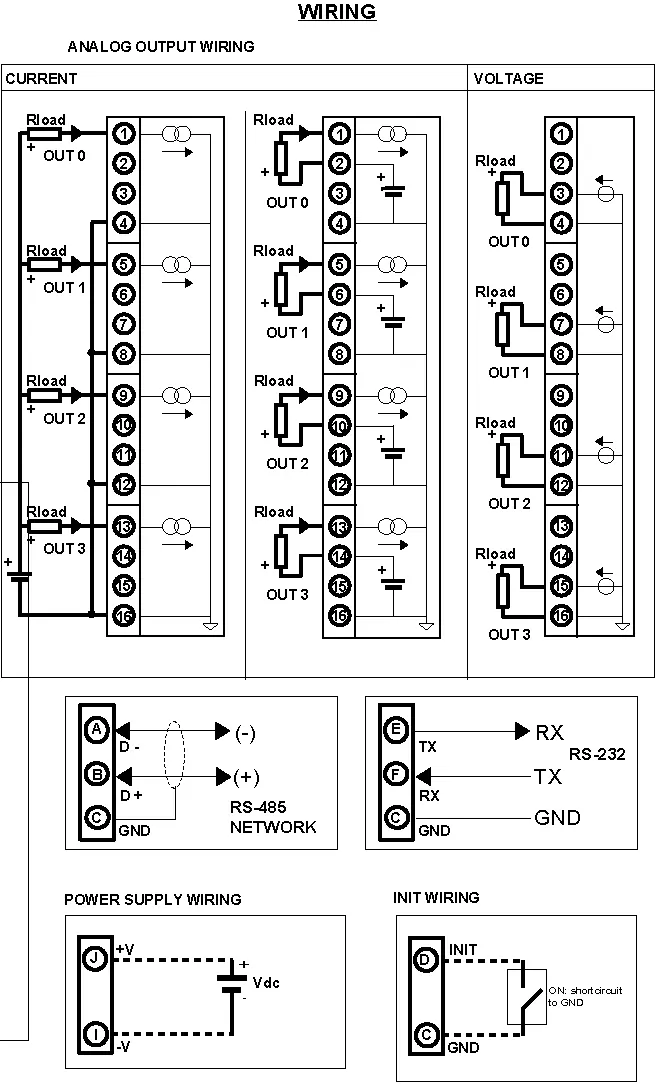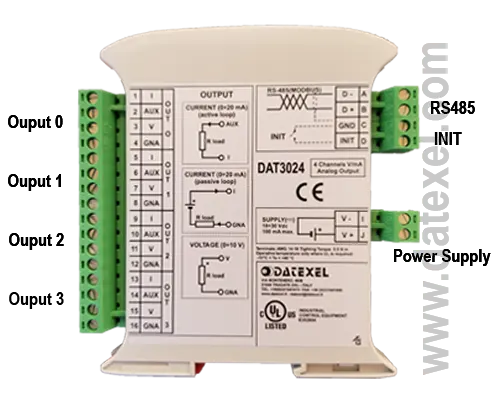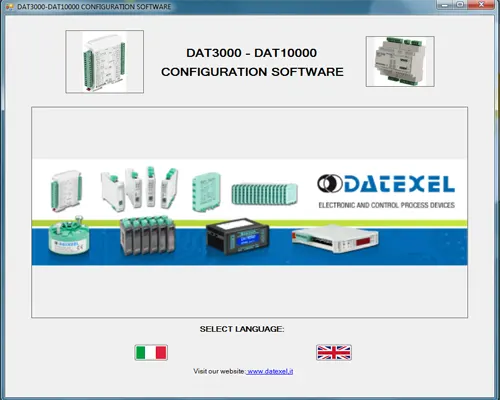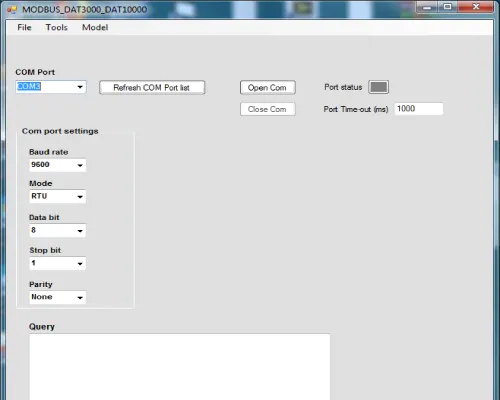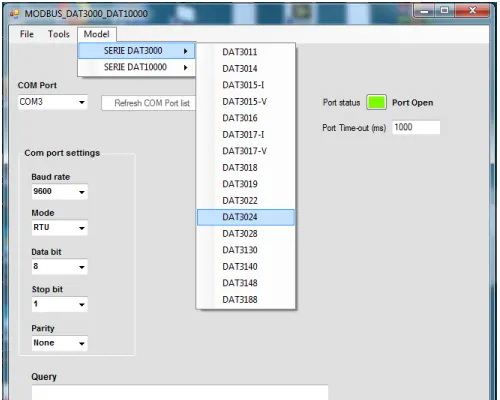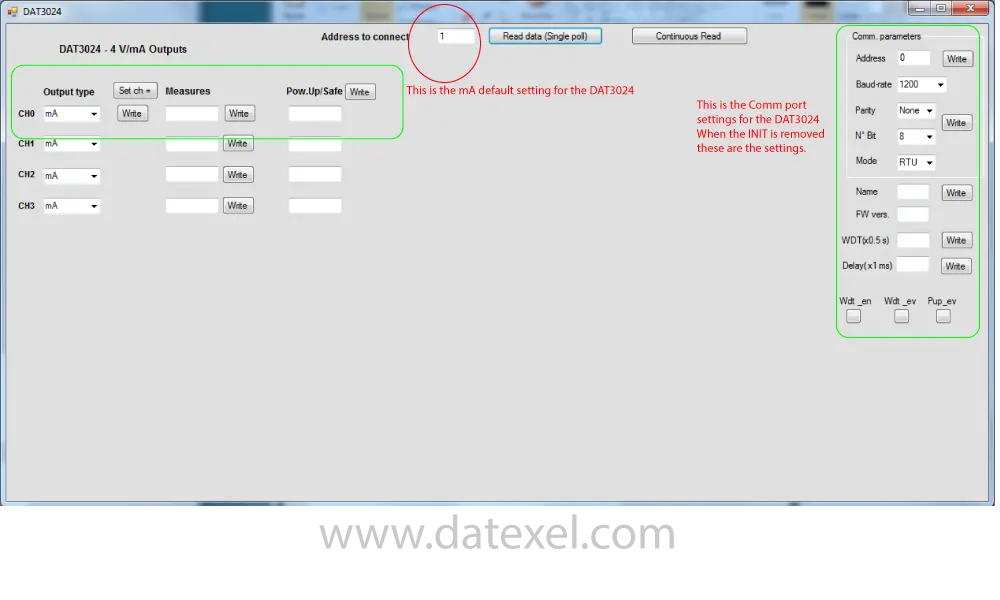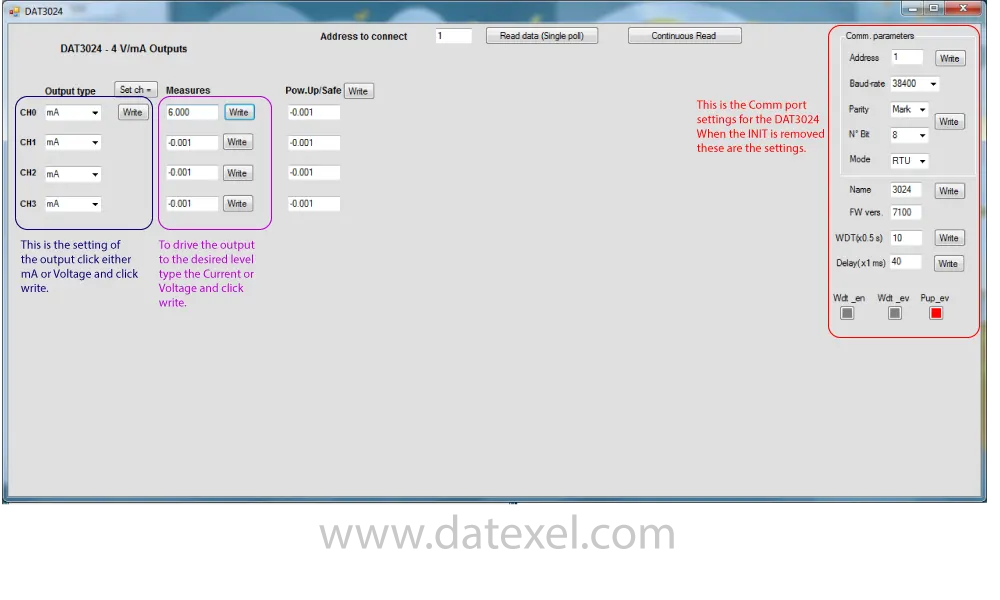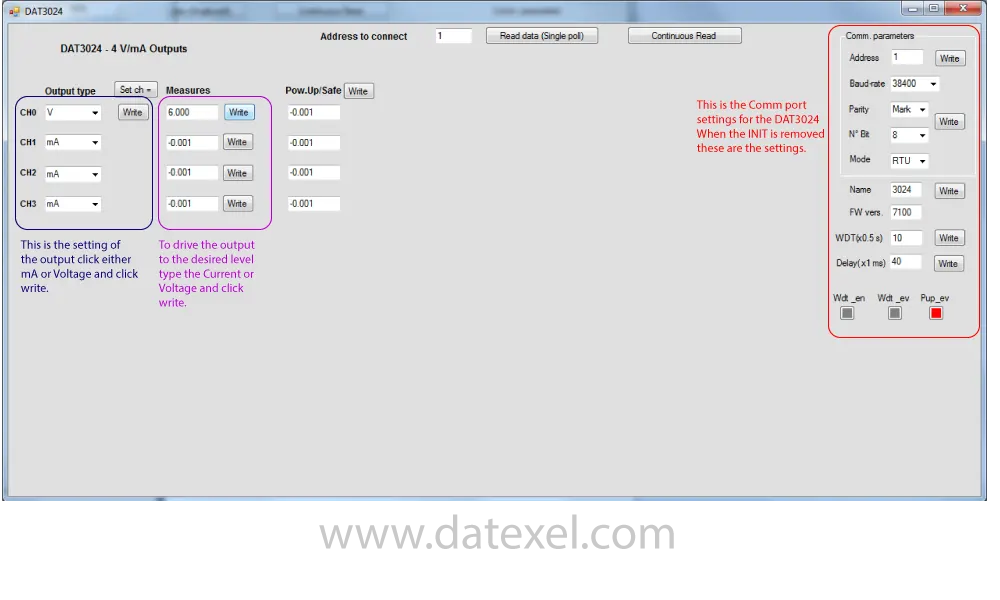RS485 to 4-20mA and Voltage output Module, 4 Channels.
DAT3024
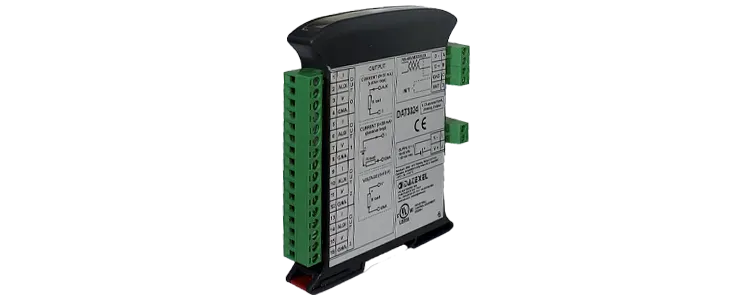

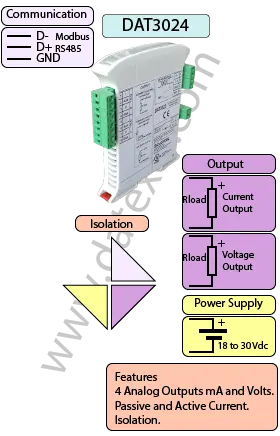
The DAT3024 Modbus to Analog Output Converter is a 4-channel module designed to convert Modbus commands into isolated current or voltage signals. It is ideal for driving actuators, indicators, or control loops directly from a Modbus RTU/ASCII network.
Each output channel can be independently configured for 4–20 mA, 0–20 mA, or 0–10 V, providing maximum flexibility in system integration. The outputs are galvanically isolated from both the Modbus communication line and the power supply, ensuring safe and reliable operation in industrial environments.
The slew rate is adjustable, allowing users to fine-tune output response time for their application. In addition to Modbus RTU over RS-485, the DAT3024 is also available in an RS-232 Modbus ASCII version for serial communication.
| INPUT | OUTPUT | POWER SUPPLY |
|---|---|---|
| Modbus RS232 | 4-20 MA | Power Supply Voltage 18-30Vdc |
| 0-10 Volts | Reverse polarity protection 60Vdc | |
| CURRENT CONSUMPTION | CONFIGURATION | ISOLATION |
| Between 30 and 100 mA | PC Programmable | Between Input/Comms/Power Supply 2000Vac. |
| EMC | HOUSING | TEMPERATURE |
| For Industrial environments | Material self-extinguishing | Operating Temperature 14°F +140°F -10°C +60°C |
| Immunity EN 61000-6-2 | Dimensions W x H x T 4" x 4 3/4" x 3/4" | Storage Temperature -40°F +185°F-40°C +85°C |
| Emission EN 6100-6-4 | 100 x 120 x 22.5 mm | Humidity (non condensing) 0-90% |
| Weight 3 oz 90 g |
| Output: | 4 Channels |
| mA | 0-20mA , 4-20mA. |
| Voltage | 0-10Volt |
| Communication: | |
| Modbus | RS485 |
| Power Supply: | 18 - 30 Vdc. Reverse polarity protection 60 Vdc. |
| Current Consumption: | 30 mA. |
| Temperature rating: | Operative Temperature -4°F +140°F -20°C +60°C Storage Temperature -40°F +185°F -40°C +85°C. |
| Humidity: | (not condensing) 0-90%. |
| Housing: | Material self-extinguishing. |
| Dimensions: | W x L x H 3 3/4X 3 1/2 X 1 7/8 inch, 90 x 74 x 48mm. |
| Weight: | 7 oz 200 g. |
| EMC. | For industrial environments. |
| Immunity: | EN 61000-6-2. |
| Emission: | EN 61000-6-4. |
| Isolation: | Between Modbus Master, Slave/Power supply 1500Vac, 50Hz, 1 Minute. |
| Configuration: | PC Configurable. |
| Output | |
| Passive | |
| Current Output 0 | Positive 1 Negative 4 |
| Current Output 1 | Positive 5 Negative 8 |
| Current Output 2 | Positive 9 Negative 12 |
| Current Output 3 | Positive 13 Negative 16 |
| Active | |
| Current Output 0 | Positive 1 Negative 2 |
| Current Output 1 | Positive 5 Negative 6 |
| Current Output 2 | Positive 9 Negative 10 |
| Current Output 3 | Positive 13 Negative 14 |
| Voltage Output 0 | Positive 3 Negative 4 |
| Voltage Output 1 | Positive 7 Negative 8 |
| Voltage Output 2 | Positive 11 Negative 12 |
| Voltage Output 3 | Positive 15 Negative 16 |
| Power Supply (18-30Vdc). | Positive J Negative I. |
| RS 485 Slave | Positive (D+)B Negative (D-) A GND C |
| RS-232D | C GND |
| E RX | |
| F TX | |
| Init | Pin D Init Gnd C |
